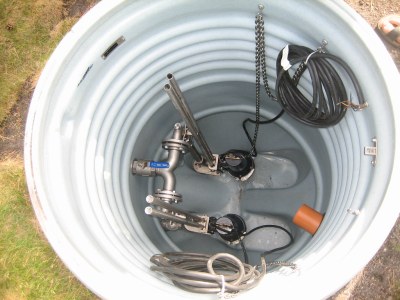Sewage treatment plants function as the disposal site and treatment of wastewater for the sewage collected from households, establishments, industrial, and also agricultural. The gathering and disposal of sewage systems send the wastewater through cities to the treatment plants.
Did You Ever Wonder How A Wastewater Treatment Plant Functions?
The following three paragraphs taken from a PDF document on the EPA site are very interesting and really take an in-depth look at the systems in place throughout the United States for the proper and safe treatment of raw sewage and wastewater from many municipalities in the country.
One of the most common forms of pollution control in the United States is wastewater treatment. The country has a vast system of collection sewers, pumping stations, and treatment plants. Sewers collect the wastewater from homes, businesses, and many industries, and deliver it to plants for treatment. Most treatment plants were built to clean wastewater for discharge into streams or other receiving waters, or for reuse.
Years ago, when sewage was dumped into waterways, a natural process of purification began. First, the sheer volume of clean water in the stream diluted wastes. Bacteria and other small organisms in the water consumed the sewage and other organic matter, turning it into new bacterial cells; carbon dioxide and other products. Today’s higher populations and the greater volume of domestic and industrial wastewater require that communities give nature a helping hand.
The basic function of wastewater treatment is to speed up the natural processes by which water is purified. There are two basic stages in the treatment of wastes, primary and secondary, which are outlined here. In the primary stage, solids are allowed to settle and removed from wastewater. The secondary stage uses biological processes to further purify wastewater. Sometimes, these stages are combined into one operation.
My Educated Opinion
After reading the previous three blurbs of content delivered by the Environmental Protection Agency, it’s clear that without sewage treatment plants and this associated management for solid and liquid waste recycling, we would be in real trouble as far as disease and sickness in this county.
The wastewater is treated in the sewage treatment plants to preserve the natural environment by controlling water pollution and also ensuring that the water is thoroughly clean and free from any contaminants before it’s discharged to the environment specific to the bodies of water. Another goal of treating the sewage is to provide protection to public health and to prevent the spread of diseases.
The sewage system could transport the wastewater by gravitational forces to get diverted to the sewage treatment plant. If it is difficult for pipeline excavation because of boulders of rock and there is limited topographic relief, the collection of waste by gravity might not be applicable. In this case, the sewage must be pumped through the pipeline and straight into the sewage treatment plants.
Wastewater and Low-Lying Areas
For those situated in low lying areas, wastewater might be transported by using a vacuum. The measurements of pipelines could vary from 6 inches in diameter to thirty feet in diameter of concrete-lined tunnels.
The sewage form community can be collected by an effluent sewer system also referred to as STEP system or Septic Tank Effluent Pumping. In every house where it utilized an underground collection tank that separates the solids from the liquids portion.
The liquid portion is pumped through a small diameter pipe that has a size of 1.5 inches to 4 inches heading to the downstream treatment. The pipes could be laid underneath the ground surface along the land’s contour because the waste stream is pressurized. The sewage can also be collected by utilizing low-pressure pumps and vacuum systems.
The residents served is considered in the size and design of the sewage collection systems. Another consideration is the commercial and industrial flows, the characteristics of peak flow, and also the wet weather flow. The merged sewer systems are normally built to convey both the sewage and stormwater runoff at the same time in similar pipes.
The characteristics of the watershed are likewise considered in the projected design of the merged sewer systems. Oftentimes, particularly in recent years, the amount of stormwater runoff can no longer be handled by the combined sewer that causes sewer overflows. This leads to water pollution problems in the nearby bodies of water. Onsite wastewater and sewage treatment effluent pumping systems are found on over 40 million homes in the United States. The YouTube video below covers this process in great detail.
Municipal Sewer Lines – Design and Function
The style and design of sewer lines that go to the waste treatment facilities nowadays are separate lines for storm runoff and sewage alone. The storm runoff will move right to the surface water while the sewage systems will be transported to the sewage treatment plants. Many municipal sewer systems these days are constructed with isolated sewer systems.
Even when the design of sewer systems is to have separate lines of which one is entirely created for sewage, the inflow and infiltration of surface water cannot be prevented. This in effect may cause the sanitary sewer to overflow. The inflow, as well as infiltration, is extremely affected by moisture conditions, which is likewise provided a significant thought in the system design.
Thanks for checking out my latest blog post on municipal sewage treatment plants and on-site wastewater collection systems.
To read more about wastewater treatment and septic systems in general, check out this blog post.
from Ed’s Environmental Blogger https://edwardhorbachukiii.blogspot.com/2020/05/the-role-of-sewage-treatment-plants.html
https://edwardhorbachukiii.blogspot.com/
from
https://greasetrapcleaning1.wordpress.com/2020/05/17/the-role-of-sewage-treatment-plants-saving-the-environment/


No comments:
Post a Comment